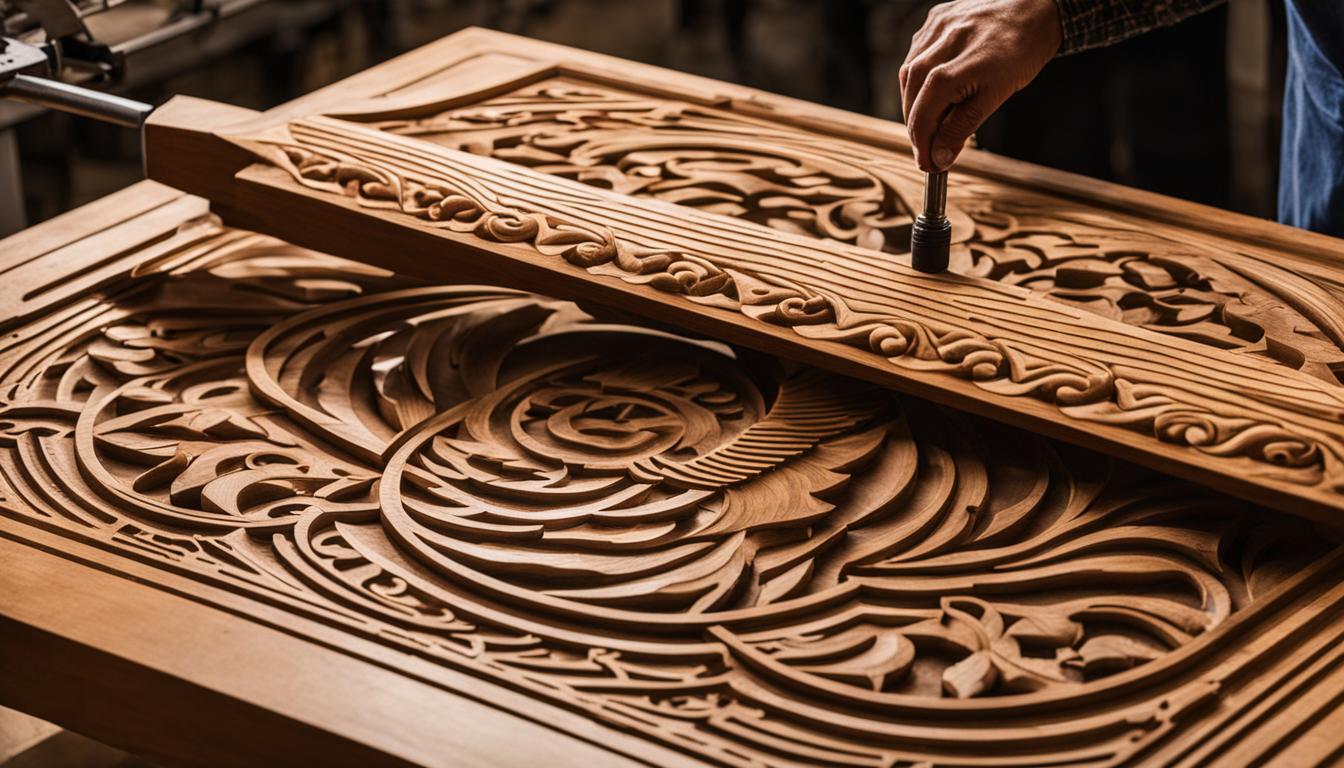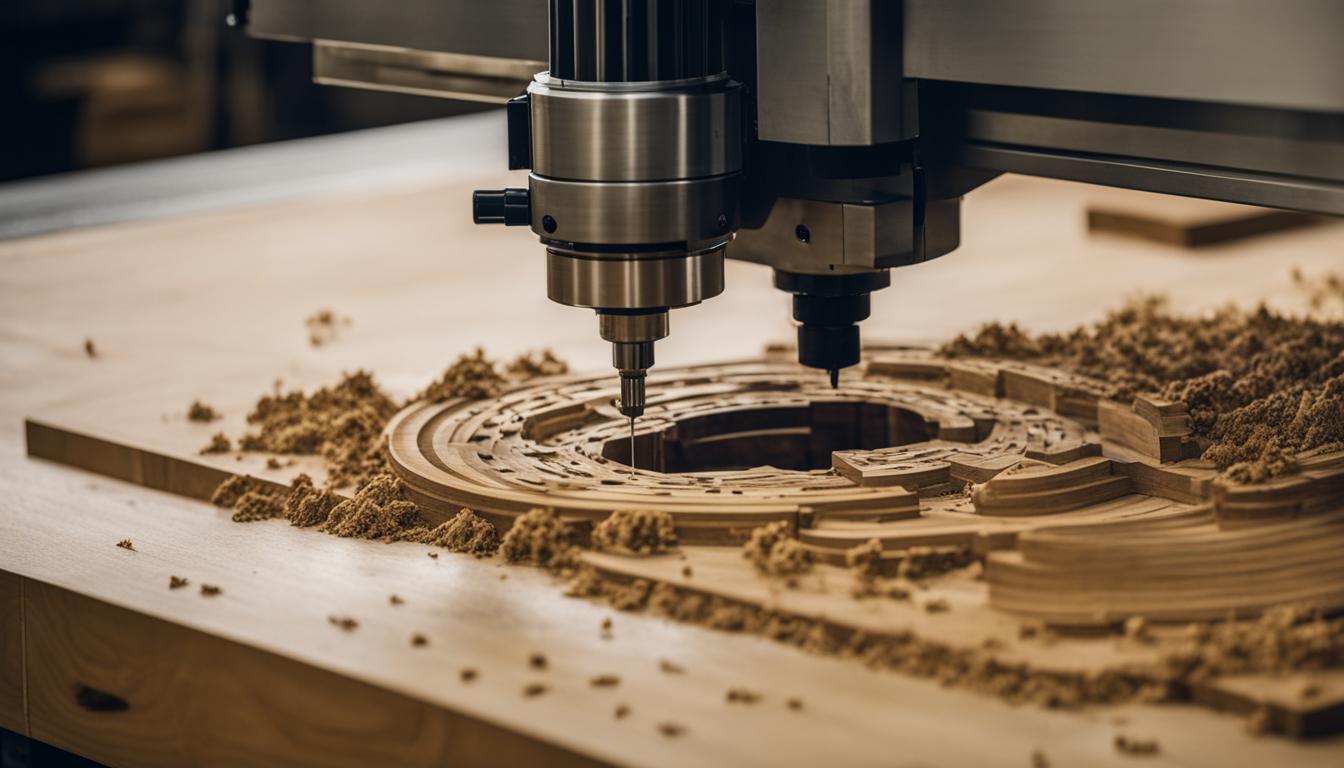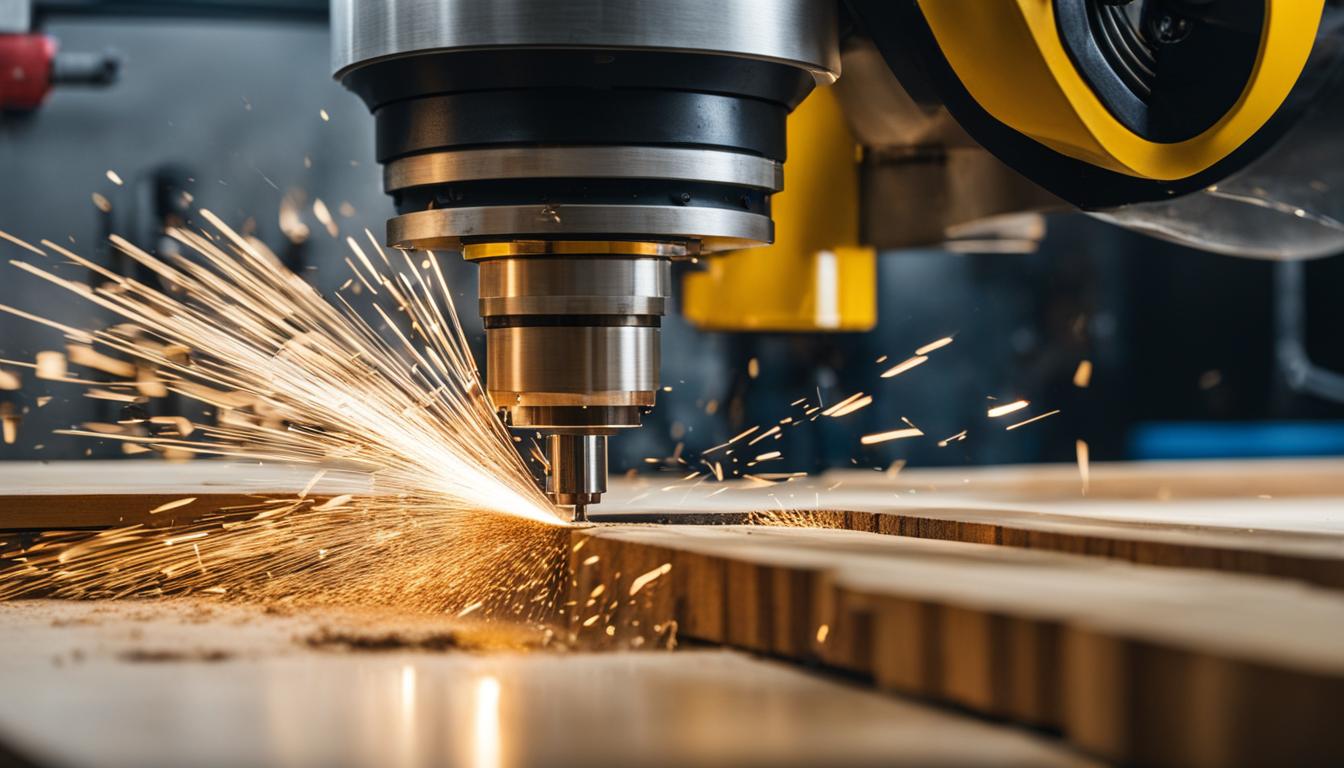CNC Shopbots are versatile computer-controlled cutting machines that perform a wide range of functions in woodworking, metalworking, and other manufacturing industries. These machines excel at precision cutting, carving, drilling, and engraving tasks on various materials, including wood, plastics, and soft metals. Shopbots utilize a computer-guided cutting tool that moves along multiple axes, allowing for intricate 2D and 3D designs to be created with high accuracy and repeatability.
Key uses of CNC Shopbots include producing custom furniture components, creating decorative panels and signs, fabricating prototypes, and manufacturing small-scale production runs. The ability to automate complex cutting processes makes Shopbots invaluable for both hobbyists and professional workshops, significantly reducing labor costs and increasing productivity. With their user-friendly interfaces and compatibility with popular design software, CNC Shopbots have become essential tools for makers, craftsmen, and small-scale manufacturers looking to enhance their production capabilities and expand their creative possibilities.
- A CNC Shopbot is a computer-controlled tool used for cutting, carving, machining, and milling various materials.
- ShopBot has made CNC technology more accessible and affordable for individuals and small shops.
- Design software plays a crucial role in controlling the cutter and creating precise toolpaths for the CNC Shopbot.
- CNC Shopbots have a wide range of applications, from woodworking to creating intricate designs.
- Proper maintenance and understanding of G-code are essential for the optimal operation of CNC Shopbots.
As we delve deeper into the world of CNC Shopbots, let’s explore how these remarkable machines work and their various applications.
How CNC Works
ShopBot Tools, like all CNC tools, move a cutter around a big table (X and Y axes) and move it up and down as well (Z axis). This allows the machine to make 3D movements and cut various shapes. The cutter, which looks like a drill bit, can cut from the sides and the tip. ShopBot CNC tools can cut materials such as wood, plastic, foam, aluminum, and composites. They can cut straight lines, circles, holes, arcs, ellipses, and curves with any level of complexity. ShopBots also come with design software for creating and defining toolpaths.
Design Software Concepts for CNC
Designing for CNC involves two types of software: CAD (computer-aided design) and CAM (computer-aided machining). CAD software helps create 2D or 3D designs, while CAM software helps define the tool movements for cutting or machining the parts.
ShopBot’s software combines both CAD and CAM functions, making it easier for users to create and toolpath their designs. The software allows for 2D and 3D design and can handle complex shapes and toolpathing actions.
Benefits of ShopBot’s Design Software
- Intuitive user interface for easy navigation and design creation
- Compatibility with standard file formats, such as DXF, SVG, and STL
- Advanced editing tools for precise design modifications
- Real-time rendering and visualization capabilities
- Option to generate toolpaths automatically or manually
ShopBot’s design software empowers users to unleash their creativity by providing powerful tools and a streamlined workflow. Whether you are a seasoned designer or just starting out, this software offers a seamless experience for designing and preparing your projects for CNC machining.
With ShopBot’s design software, you can create intricate 2D and 3D designs, incorporating complex shapes and toolpathing actions to achieve the desired result. The software’s compatibility with standard file formats ensures smooth import and export of designs, giving you the freedom to collaborate with other designers and work with a wide range of design resources.
Furthermore, the intuitive user interface and advanced editing tools make it easy to refine and modify your designs with precision. Real-time rendering and visualization capabilities allow you to see a preview of your design before machining, helping you make any necessary adjustments or refinements.
| Feature | Description |
|---|---|
| 2D and 3D Design | Create intricate 2D and 3D designs with ease |
| Compatibility | Import and export designs in standard file formats |
| Editing Tools | Advanced tools for precise design modifications |
| Real-time Rendering | Visualize your design in real-time for better accuracy |
| Toolpath Generation | Generate toolpaths automatically or manually |
Fun CNC Projects
ShopBot CNC machines offer a wide range of applications and benefits, allowing users to complete various exciting projects. Take a look at some fun CNC projects that showcase the versatility and creativity achievable with a ShopBot CNC machine:
- Makers Unite Pay-It-Forward Desk
- Rubberband Racer
- Gatekeeper’s Padlock Key Hanger
- Rustic Welcome Door Plaque
- Vintage Candlestick Telephone Clock
- Pineapple Fruit Server
- Boat Hull Nautical Shelf
- Neptune’s Soap Dish
These projects not only highlight the shopbot benefits but also demonstrate the wide range of shopbot applications. Whether you’re creating functional furniture pieces or decorative items, a ShopBot CNC machine allows you to unleash your creativity and bring your ideas to life.
With a ShopBot CNC machine, you can achieve intricate designs and precise cuts, enabling you to explore your artistic genius and tackle projects of varying complexities. Experience the joy of crafting unique pieces that reflect your personal style and leave a lasting impression.
Customer Testimonials:
“Using the ShopBot CNC machine has completely transformed my woodworking projects. I am now able to create intricate designs and precision cuts that were nearly impossible before. The versatility of the machine allows me to experiment with different materials and bring my ideas to life. It’s been a game-changer for my craft.”
| Project | Description |
|---|---|
| Makers Unite Pay-It-Forward Desk | A customizable desk designed to promote collaboration and a sense of community. The project encourages people to share their skills and connect with others. |
| Rubberband Racer | A fun and interactive toy car that uses rubber bands for propulsion. The ShopBot CNC machine precisely cuts the parts, allowing for easy assembly. |
| Gatekeeper’s Padlock Key Hanger | A decorative key hanger in the shape of a padlock. The ShopBot CNC machine creates intricate keyholes and unique designs that make this piece stand out. |
| Rustic Welcome Door Plaque | A charming wooden plaque that welcomes guests to your home. The ShopBot CNC machine carves intricate lettering and patterns for a rustic, handcrafted look. |
| Vintage Candlestick Telephone Clock | A unique clock design inspired by vintage candlestick telephones. The ShopBot CNC machine allows for precise carving and intricate detailing. |
| Pineapple Fruit Server | A stylish and functional fruit server in the shape of a pineapple. The ShopBot CNC machine creates intricate cuts and patterns to give this piece a tropical flair. |
| Boat Hull Nautical Shelf | A decorative nautical-themed shelf shaped like a boat hull. The ShopBot CNC machine creates precise cuts and detailing to bring this unique shelf to life. |
| Neptune’s Soap Dish | A beautiful soap dish inspired by the ocean. The ShopBot CNC machine carves intricate seashell designs and precise grooves for drainage. |

ShopBot User Guide
The ShopBot User Guide is an essential resource for anyone using and maintaining ShopBot CNC machines. It provides comprehensive information on various topics to ensure a smooth and successful CNC experience. Here’s what you can expect to find in the user guide:
- Warnings: Prior to operation, the guide highlights important safety precautions and warnings that users should be aware of.
- Getting Started: Step-by-step instructions on setting up and getting started with the ShopBot Control Software, ensuring users can quickly familiarize themselves with the interface.
- Layout and Configuration: Detailed explanations and visual references to understand the layout of the ShopBot table, including the description and purpose of each component. Also covers computer and tool settings for optimal performance.
- Using G-Code: Guidance on using G-code, a programming language that controls the ShopBot CNC machine. This section delves into the basics of G-code, conversion from different file formats, and specific considerations for each type of conversion.
- Troubleshooting: Inevitably, issues may arise during CNC operations. The user guide offers troubleshooting tips to resolve common problems and maintain uninterrupted workflow.
- Accessories: Information on additional accessories, such as rotary indexers and 3-D digitizing tools, enabling users to expand their capabilities and explore new creative avenues.
The ShopBot User Guide is a comprehensive companion that empowers users to leverage the full potential of CNC shopbot technology. Whether you’re a beginner or an experienced user, the user guide is a valuable resource for maximizing the shopbot’s features and capabilities.

| ShopBot User Guide Highlights | Benefits |
|---|---|
| Provides comprehensive information on using and maintaining ShopBot CNC machines | Ensures users can operate the shopbot confidently and optimally |
| Highlights important safety precautions and warnings | Promotes a safe working environment |
| Step-by-step instructions for setting up and getting started with the ShopBot Control Software | Enables quick and seamless start for beginners |
| Understanding the layout of the ShopBot table and configuring computer and tool settings | Allows users to maximize the shopbot’s performance |
| Guidance on using G-code for precise and complex tool movements | Facilitates the creation of intricate designs |
| Troubleshooting tips for resolving common issues | Minimizes downtime and enhances productivity |
| Information on additional accessories for expanding capabilities | Allows users to explore new applications and projects |
Maintaining Your ShopBot
Proper maintenance is crucial for keeping your ShopBot CNC machine in optimal condition. The User Guide provides instructions for both mechanical and electrical/electronic maintenance. Mechanical adjustments, such as aligning the X and Y axes, are important for ensuring accurate cuts. Electrical maintenance involves checking and maintaining the control software and hardware components. The guide also provides troubleshooting tips for common issues that may arise during operation.
Mechanical Maintenance
Mechanical maintenance plays a significant role in preserving the precision and performance of your ShopBot CNC machine. Here are some key tasks to consider:
- Regularly check and lubricate the X, Y, and Z axes to ensure smooth movement.
- Inspect and clean the ball screws and linear bearings to prevent debris buildup.
- Align the X and Y axes using the ShopBot-provided alignment tools for accurate cuts.
- Keep the table surface clean and free from debris to avoid interference with cutting operations.
Electrical/Electronic Maintenance
Electrical and electronic maintenance is essential for the proper functioning of your ShopBot CNC machine. Here are some important tasks to perform:
- Regularly inspect and clean the connectors and cables to prevent loose connections or signal loss.
- Check the control software and firmware for updates to ensure optimal performance.
- Verify the motor and spindle wiring for any signs of damage and address them promptly.
- Calibrate the motor settings according to the manufacturer’s guidelines for accurate operation.
Remember to follow the User Guide provided by ShopBot for detailed instructions specific to your machine model and configuration.
By following the recommended maintenance procedures, you can maximize the lifespan and performance of your ShopBot CNC machine, ensuring accurate cuts and efficient operation.
| Common Maintenance Tasks | Frequency |
|---|---|
| Cleaning and lubrication of axes | Weekly |
| Alignment of X and Y axes | Monthly |
| Inspection and cleaning of connectors and cables | Bi-monthly |
| Checking control software and firmware updates | Quarterly |
| Verification of motor and spindle wiring | Bi-annually |
Working with G-Code
G-code is a powerful programming language that plays a crucial role in controlling CNC machines, including ShopBot CNC machines. By understanding and working with G-code, users can unlock the full potential of their CNC technology and leverage its capabilities to execute complex toolpaths for their projects.
When it comes to G-code, it’s important to have a solid foundation in its basics. The User Guide provided by ShopBot offers comprehensive explanations and instructions on how to efficiently work with G-code on their CNC machines.
One of the key aspects covered in the User Guide is converting different file formats into G-code. Whether you have a DXF, HPGL/PLT, BMP, or JPG file, the guide walks you through the process of starting the conversion, ensuring compatibility with the ShopBot CNC machine.
The ShopBot User Guide also provides specific information and tips for each type of conversion. This detailed guidance enables users to generate accurate toolpaths from their designs, ensuring precise cuts and desired outcomes.
Benefits of Working with G-Code on ShopBot CNC Machines
- Flexibility: G-code allows for the creation and execution of intricate toolpaths, giving users limitless design possibilities.
- Precision: By working with G-code, users can achieve highly accurate cuts and shapes, ensuring the desired level of precision in their projects.
- Efficiency: G-code streamlines the manufacturing process, optimizing tool movements and reducing production time.
- Complexity: With G-code, users can tackle complex projects that require intricate toolpaths and precise coordination between machine movements.
Working with G-code on a ShopBot CNC machine opens up a world of possibilities for users who seek to unleash their creativity and maximize the capabilities of their CNC technology.
Expert Tip: Enhance Your G-Code Workflow
“To enhance your G-code workflow, consider familiarizing yourself with CAD and CAM software. These tools allow you to design and simulate your projects before generating G-code for your ShopBot CNC machine. By combining design software with G-code capabilities, you can streamline the production process and achieve optimal results.”
Troubleshooting and Maintenance
Proper troubleshooting and maintenance are essential to keep your ShopBot CNC machine running smoothly and ensure its longevity. The User Guide provides a comprehensive resource for troubleshooting common issues that may arise during the use of your ShopBot CNC machine. Whether you encounter mechanical adjustments, electrical/electronic maintenance, or control software troubleshooting, the guide offers practical solutions to help you resolve problems effectively.
When it comes to mechanical adjustments, it’s important to ensure that the X and Y axes of your ShopBot CNC machine are aligned correctly. This alignment ensures accurate cuts and precise machining. The User Guide provides step-by-step instructions on how to check and adjust these axes, helping you achieve optimal performance and quality in your projects.
In addition to mechanical adjustments, the User Guide also covers electrical/electronic maintenance. It guides you through the process of checking and maintaining the control software and hardware components of your ShopBot CNC machine. By regularly inspecting these components and implementing any necessary updates or repairs, you can enhance the overall functionality and reliability of your machine.
Overall, proper troubleshooting and maintenance practices are vital for maximizing the capabilities and lifespan of your ShopBot CNC machine. By following the guidelines provided in the User Guide, you can effectively address common issues, maintain optimal performance, and prolong the longevity of your CNC tool.
